
Clique aqui para baixar o disco/Download the album - Badongo
ou / or
Clique aqui para baixar o disco/Download the album - RapidShare
+ 8 faixas bônus (todos os compactos da Continental) / + 8 bonus tracks (all the seven-inches for Continental)
........................................................
 Maior referência brasileira no instrumento que virou parte de seu nome, Jacob alçou o bandolim a um lugar de honra na música brasileira. Esse trabalho vinha sendo desenvolvido antes por outros instrumentistas, como Luperce Miranda, mas foi Jacob quem colocou definitivamente o bandolim como instrumento solista por excelência.
Maior referência brasileira no instrumento que virou parte de seu nome, Jacob alçou o bandolim a um lugar de honra na música brasileira. Esse trabalho vinha sendo desenvolvido antes por outros instrumentistas, como Luperce Miranda, mas foi Jacob quem colocou definitivamente o bandolim como instrumento solista por excelência. Nascido no Rio de Janeiro, ganhou o primeiro bandolim, de modelo napolitano (ou "de cuia") na adolescência. Apesar de se apresentar tocando em conjuntos instrumentais desde cedo, nunca se profissionalizou totalmente, tendo sempre outros empregos não relacionados à música. Foi vendedor, prático de farmácia, corretor de seguros, comerciante e escrivão de polícia, cargo que ocupou até morrer. Por não depender financeiramente da música, Jacob pôde tocar e compor com mais liberdade, sem sofrer pressões de gravadoras ou editoras. Figura rígida e disciplinada, tanto na personalidade quanto na música, pesquisou e resgatou parte do repertório tradicional do choro, repertório este que passou a incluir várias de suas composições, como "Noites Cariocas", "Receita de Samba", "A Ginga do Mané", "Doce de Coco", "Assanhado", "Treme-treme", "Vibrações" e "O Vôo da Mosca".
Depois de montar o grupo Jacob e Sua Gente, integrar o Conjunto da Rádio Ipanema e o regional de César Faria e participar de gravações históricas como a de Ataulfo Alves para "Ai, que Saudade da Amélia" (Ataulfo/Mário Lago) e a de Nelson Gonçalves para "Marina" (Dorival Caymmi), gravou em 1947 o primeiro disco solo, seguido por outros dois nos anos seguintes, pela Continental.
Na década de 50 transferiu-se para a Victor, onde gravou seus LPs. Montou o conjunto Época de Ouro em 1966, com grandes nomes do choro, como Dino 7 Cordas, César Faria, Jonas, Carlinhos, Gilberto e Jorginho. Alcançando expressiva popularidade, Jacob e o Época de Ouro ajudaram a divulgar o choro tradicional, por meio de shows e LPs, como o consagrado "Vibrações" (1967).
O conjunto permanece em atividade até hoje. Uma das últimas apresentações de Jacob, um show com Elizeth Cardoso e o Zimbo Trio em 1968, foi gravado e lançado em LP duplo, mas não foi relançado em CD no Brasil. Outras antologias foram produzidas, da mesma forma, exclusivamente para o mercado externo, onde a arte de Jacob é muito apreciada. Seu filho, o compositor Sérgio Bittencourt, homenageou-o no samba "Naquela Mesa" ("tá faltando ele/ e a saudade dele/ tá doendo em mim"), sucesso de Elizeth Cardoso, cantora que ele descobriu. Em 1997 a professora Ermelinda Paz lançou o livro "Jacob do Bandolim", pela editora Funarte.
************************
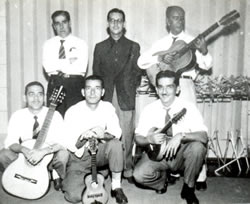 Jacob do Bandolim is one of the first names in the history of the choro genre. A serious and dedicated musician, he instilled a high degree of professionalism in the traditionally relaxed music — even if he was never a professional himself (he made a living as a notary). He struggled to preserve Brazilian roots, and fought to impose his artistic sincerity on the music industry. He left important compositions that were incorporated in the repertory of chorões.
Jacob do Bandolim is one of the first names in the history of the choro genre. A serious and dedicated musician, he instilled a high degree of professionalism in the traditionally relaxed music — even if he was never a professional himself (he made a living as a notary). He struggled to preserve Brazilian roots, and fought to impose his artistic sincerity on the music industry. He left important compositions that were incorporated in the repertory of chorões. The son of a middle-class family, do Bandolim followed formal studies until his completion of the accounting course of study. In 1930, when he was 12, he became strongly motivated by the music of a blind violinist who was his neighbor. Asking his mother to give him a violin, he left the bow of the instrument aside, picking the strings with hairpins. After many broken strings, his mother gave him a mandolin at the suggestion of another neighbor.
His first performance as an amateur was three years later, at the Grêmio dos Estudantes Israelitas. In December of that year, he performed for the first time on Rádio Guanabara. In those times, he was already a brilliant mandolinist, and also a good violonista (acoustic guitarist) and cavaquinho player. In the next year, he won his first important contest at Rádio Guanabara, invited by Benedito Lacerda. Accompanied by Carlos Lentine, Luís Bittencourt, Canhoto, and Russo do Pandeiro, his group was named Jacob e Sua Gente by the show director, and was awarded the maximum grade given by the professional jury in a contest disputed by other 27 participants. Jacob e Sua Gente became a regular on Rádio Guanabara, alternating with the Regional de Benedito Lacerda and the Gente do Morro group in the accompaniment of professional singers and musicians like Noel Rosa, Herivelto Martins, Dunga, Joel e Gaúcho, Elizeth Cardoso, Ataulfo Alves, Lamartine Babo, Araci de Almeida, and Carlos Galhardo. But do Bandolim never became a professional musician because he knew he would have lost his musical personality — which was a very purist one. Instead, he held several jobs as a salesman or hawker, becoming a notary in 1940 and keeping that job until his death.
In 1935, he joined the Conjunto da Rádio Ipanema, one of the three important groups of his life, initially directed by Mário Silva and later directed by himself. The group featured César Faria (after 1939) and Claudionor Cruz (violões, or acoustic guitars), Léo Cardoso (afoxê), and Candinho (drums). In 1943, by insistence of his future father-in-law, he abandoned his radio work, returning at the explicit desire of his wife, Adylia, in 1945 at Rádio Mauá.
His first album was recorded in October 1947 with Continental (a company for whom he worked until 1949), having the hit "Remeleixo." In July 1949, do Bandolim moved to RCA Victor, recording eight albums until October 1950. From March 1951 on, for the next ten years, he was accompanied by the Regional do Canhoto. In July 1961, the recording of Chorinhos e Chorões marked the opening of the group Época de Ouro, the third important group of his life, and one of the most prominent of all time in the genre. The group used other names until the LP Vibrações, which was released in October 1967 and is considered one of the best of all time. Do Bandolim's imposed weekly rehearsals on Fridays and sometimes on Saturdays were rigorous. During those rehearsals the musicians sweated profusely, because the slightest mistake was accompanied by terrible admonishing in do Bandolim's resounding voice.
In 1968, with Elizeth Cardoso (whom he introduced to the artistic scene), the Época de Ouro, and the Zimbo Trio, do Bandolim gave a concert at the Teatro João Caetano that was released on two albums by the Image and Sound Museum of Rio de Janeiro, and is considered one of the best shows of all time in Brazilian popular music. The American mandolinist Dexter Johnson organized a compilation of do Bandolim's solo work on two CDs with 43 tracks, Mandolin master of Brazil.
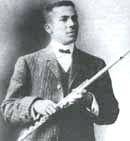 Neste post, procurei reunir algumas gravações históricas da música instrumental produzida no Brasil. As primeiras gravações foram feitas no ano de 1902 (algumas de Patápio Silva, Banda da Casa Edison), ano de fundação da primeira gravadora brasileira, a Casa Edison, por Frederico Figner.
Neste post, procurei reunir algumas gravações históricas da música instrumental produzida no Brasil. As primeiras gravações foram feitas no ano de 1902 (algumas de Patápio Silva, Banda da Casa Edison), ano de fundação da primeira gravadora brasileira, a Casa Edison, por Frederico Figner.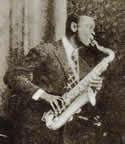 On this post, I've tried to gather some historical recordings of the instrumental music produced in Brazil. The first recordings were made in 1902 (by Patápio Silva, Banda da Casa Edison), the year the first recording company was founded in Brazil, Casa Edison, by Frederico Figner.
On this post, I've tried to gather some historical recordings of the instrumental music produced in Brazil. The first recordings were made in 1902 (by Patápio Silva, Banda da Casa Edison), the year the first recording company was founded in Brazil, Casa Edison, by Frederico Figner.
 Iniciou sua carreira profissional aos 16 anos de idade, como integrante do grupo A Barca do Sol, com o qual gravou dois discos e apresentou-se por todo o país, realizando shows de abertura para espetáculos de artistas como Egberto Gismonti e Milton Nascimento.
Iniciou sua carreira profissional aos 16 anos de idade, como integrante do grupo A Barca do Sol, com o qual gravou dois discos e apresentou-se por todo o país, realizando shows de abertura para espetáculos de artistas como Egberto Gismonti e Milton Nascimento.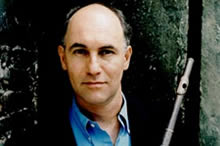 Participou do CD "Sopro contemporâneo brasileiro", lançado pela Visom Digital, que incluiu os mais conceituados instrumentistas de sopro do Brasil.
Participou do CD "Sopro contemporâneo brasileiro", lançado pela Visom Digital, que incluiu os mais conceituados instrumentistas de sopro do Brasil.  Trabalhou também no mercado fonográfico, tendo co-produzido os seguintes discos: "Corra o risco" (1978), de Olívia Byington; "Pirata" (1979), do grupo A Barca do Sol; "Monique Aragão" (1991), contemplado com o Prêmio Sharp, na categoria Revelação Instrumental, "Canoas" (1993) e "Ventos do Brasil" (1995), de Monique Aragão. Assinou, ainda, a produção musical de seus discos "Baladas brasileiras" (1996) e "Caldo de cana" (1999).
Trabalhou também no mercado fonográfico, tendo co-produzido os seguintes discos: "Corra o risco" (1978), de Olívia Byington; "Pirata" (1979), do grupo A Barca do Sol; "Monique Aragão" (1991), contemplado com o Prêmio Sharp, na categoria Revelação Instrumental, "Canoas" (1993) e "Ventos do Brasil" (1995), de Monique Aragão. Assinou, ainda, a produção musical de seus discos "Baladas brasileiras" (1996) e "Caldo de cana" (1999).  One of the best flutists/saxophonists in Brazil, David Ganc has recorded over 80 albums of both vocal and instrumental music, having performed and recorded for artists like Stevie Wonder, Luiz Melodia, Elba Ramalho, Victor Mendonza, Olívia Byington, Gal Costa, Moraes Moreira, Simone, Alcione, Caetano Veloso, Emílio Santiago, João Bosco, Nelson Gonçalves, Tim Maia, and other artists. An ex-member of the extinct but influential A Barca do Sol, he toured Europe with his Quarteto Samambaia in 1984. He also accompanied Luís Melodia in his tour through Europe in 1987 and Elba Ramalho through Mexico and the U.S. He was included in the collection Contemporary Instrumental Music From Brazil (Windham Hill Records, 1993), in duo with Nando Carneiro. Ganc was a sideman for Stevie Wonder in his four performances in 1995 at the Tenth Free Jazz Festival. As a saxophonist, he has performed with the Orquestra Sinfônica Brasileira and the Orquestra Sinfônica de Brasília. He also was included in the compilation Sopro Contemporâneo Brasileiro (Visom Digital, 1994), a selection of some of the best wind instrumentalists in Brazil. He has performed and recorded for theater musicals (Pixinguinha by Amir Haddad, Noel Rosa by Tim Rescala, and O Corsário do Rei by Augusto Boal/Chico Buarque, among others), cinema soundtracks (O Homem da Capa Preta by David Tygel and Dança dos Bonecos by Nivaldo Ornelas), TV, and dance shows. He launched his first solo CD, Baladas Brasileiras, in 1996 through Leblon Records. The same album was released in Europe by the French company Buda Musique, who distributes it worldwide.
One of the best flutists/saxophonists in Brazil, David Ganc has recorded over 80 albums of both vocal and instrumental music, having performed and recorded for artists like Stevie Wonder, Luiz Melodia, Elba Ramalho, Victor Mendonza, Olívia Byington, Gal Costa, Moraes Moreira, Simone, Alcione, Caetano Veloso, Emílio Santiago, João Bosco, Nelson Gonçalves, Tim Maia, and other artists. An ex-member of the extinct but influential A Barca do Sol, he toured Europe with his Quarteto Samambaia in 1984. He also accompanied Luís Melodia in his tour through Europe in 1987 and Elba Ramalho through Mexico and the U.S. He was included in the collection Contemporary Instrumental Music From Brazil (Windham Hill Records, 1993), in duo with Nando Carneiro. Ganc was a sideman for Stevie Wonder in his four performances in 1995 at the Tenth Free Jazz Festival. As a saxophonist, he has performed with the Orquestra Sinfônica Brasileira and the Orquestra Sinfônica de Brasília. He also was included in the compilation Sopro Contemporâneo Brasileiro (Visom Digital, 1994), a selection of some of the best wind instrumentalists in Brazil. He has performed and recorded for theater musicals (Pixinguinha by Amir Haddad, Noel Rosa by Tim Rescala, and O Corsário do Rei by Augusto Boal/Chico Buarque, among others), cinema soundtracks (O Homem da Capa Preta by David Tygel and Dança dos Bonecos by Nivaldo Ornelas), TV, and dance shows. He launched his first solo CD, Baladas Brasileiras, in 1996 through Leblon Records. The same album was released in Europe by the French company Buda Musique, who distributes it worldwide.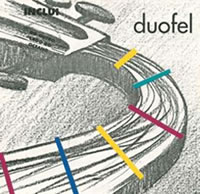
 No carnaval de 93, entramos no estúdio Camerati para gravarmos o nosso segundo CD.
No carnaval de 93, entramos no estúdio Camerati para gravarmos o nosso segundo CD.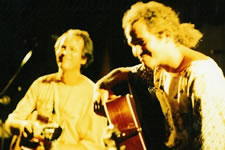 The Duofel was formed in 1977 by the instrumentalists/composers Fernando Melo and Luiz Bueno. Self-taught musicians, they became acquainted with each other in the city of São Paulo in that year, when they were playing in the prog rock band Boissucanga. Having formed the duo, they departed immediately for a trip through Pernambuco, Paraíba, and Alagoas, playing in fairs and on streets, and absorbing the folkloric and rhythmic material of Northeastern Brazil. Returning to São Paulo in 1978, they began to backup singers like Chico de Abreu and Tato Fischer, who introduced them to the singer Tetê Espíndola, with whom the Duofel really started as a professional act. In 1985, the duo participated in the Festival dos Festivais, writing the arrangement and backing Espíndola on the song "Escrito Nas Estrelas," which won the festival. Their partnership with Espíndola lasted for seven years.
The Duofel was formed in 1977 by the instrumentalists/composers Fernando Melo and Luiz Bueno. Self-taught musicians, they became acquainted with each other in the city of São Paulo in that year, when they were playing in the prog rock band Boissucanga. Having formed the duo, they departed immediately for a trip through Pernambuco, Paraíba, and Alagoas, playing in fairs and on streets, and absorbing the folkloric and rhythmic material of Northeastern Brazil. Returning to São Paulo in 1978, they began to backup singers like Chico de Abreu and Tato Fischer, who introduced them to the singer Tetê Espíndola, with whom the Duofel really started as a professional act. In 1985, the duo participated in the Festival dos Festivais, writing the arrangement and backing Espíndola on the song "Escrito Nas Estrelas," which won the festival. Their partnership with Espíndola lasted for seven years. 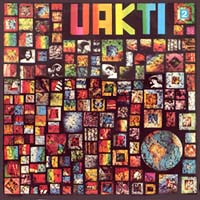
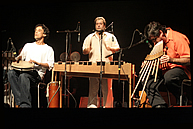 Tubos de PVC, vidros, metais, pedras, borracha e cabaças: tudo serve como material para o músico Marco Antônio Guimarães criar instrumentos e produzir os sons do grupo Uakti. Responsável pela direção musical e pela fabricação dos instrumentos, Marco Antônio concedeu entrevista exclusiva ao site no dia 8 de junho, durante ensaio do grupo no grande teatro.
Tubos de PVC, vidros, metais, pedras, borracha e cabaças: tudo serve como material para o músico Marco Antônio Guimarães criar instrumentos e produzir os sons do grupo Uakti. Responsável pela direção musical e pela fabricação dos instrumentos, Marco Antônio concedeu entrevista exclusiva ao site no dia 8 de junho, durante ensaio do grupo no grande teatro. 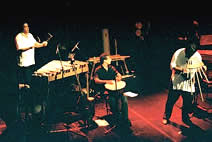 Os instrumentos vão surgindo... No processo de criação de um instrumento é comum surgir a idéia de um outro, pelo material que eu estava usando, pelas soluções que eu estava encontrando. Uma coisa muito importante é ter domínio de todo tipo de ferramenta e material. Para fazer alguns instrumentos, por exemplo, tive que aprender a cortar vidro, a aprender marcenaria. É preciso saber também onde encontrar o material: já saí pela Avenida Paraná, entrei em tudo quanto é loja para ver se encontrava uma peça que eu estava imaginando e precisava para um instrumento. Ás vezes, encontrava em lojas de peças de carro, ou de material de construção, e até mesmo de material cirúrgico.
Os instrumentos vão surgindo... No processo de criação de um instrumento é comum surgir a idéia de um outro, pelo material que eu estava usando, pelas soluções que eu estava encontrando. Uma coisa muito importante é ter domínio de todo tipo de ferramenta e material. Para fazer alguns instrumentos, por exemplo, tive que aprender a cortar vidro, a aprender marcenaria. É preciso saber também onde encontrar o material: já saí pela Avenida Paraná, entrei em tudo quanto é loja para ver se encontrava uma peça que eu estava imaginando e precisava para um instrumento. Ás vezes, encontrava em lojas de peças de carro, ou de material de construção, e até mesmo de material cirúrgico. 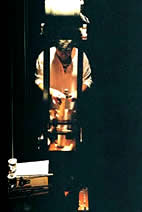 PA - Com qual material você conseguiu um som mais inesperado?
PA - Com qual material você conseguiu um som mais inesperado? 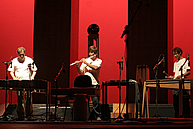 The Uakti are a quartet formed in 1978 by Marco Antônio Guimarães (musical director and main composer), Paulo Sérgio dos Santos, Artur Andrés Ribeiro, and Décio de Souza Ramos; the musicians have classical backgrounds and play with the Minas Gerais Symphonic Orchestra. The Uakti is devoted to extracting an extremely musical result from instruments made from PVC tubes, wood, glass, tin cans, and the like. Their name was taken from an ancient legend from the Tukano Indians of the Alto Rio Negro region in the Amazon. The legend recounts that Uakti was a musician who had holes throughout his body through which the wind would produce sounds that seduced women. Jealous, the men killed Uakti and buried him. In that place appeared three palm trees with which flutes are made, evoking the sound originally produced by Uakti's body. These instruments must be played only by men, so that the women don't feel tempted.
The Uakti are a quartet formed in 1978 by Marco Antônio Guimarães (musical director and main composer), Paulo Sérgio dos Santos, Artur Andrés Ribeiro, and Décio de Souza Ramos; the musicians have classical backgrounds and play with the Minas Gerais Symphonic Orchestra. The Uakti is devoted to extracting an extremely musical result from instruments made from PVC tubes, wood, glass, tin cans, and the like. Their name was taken from an ancient legend from the Tukano Indians of the Alto Rio Negro region in the Amazon. The legend recounts that Uakti was a musician who had holes throughout his body through which the wind would produce sounds that seduced women. Jealous, the men killed Uakti and buried him. In that place appeared three palm trees with which flutes are made, evoking the sound originally produced by Uakti's body. These instruments must be played only by men, so that the women don't feel tempted. 
 Br-Instrumental no Twitter
Br-Instrumental no Twitter


